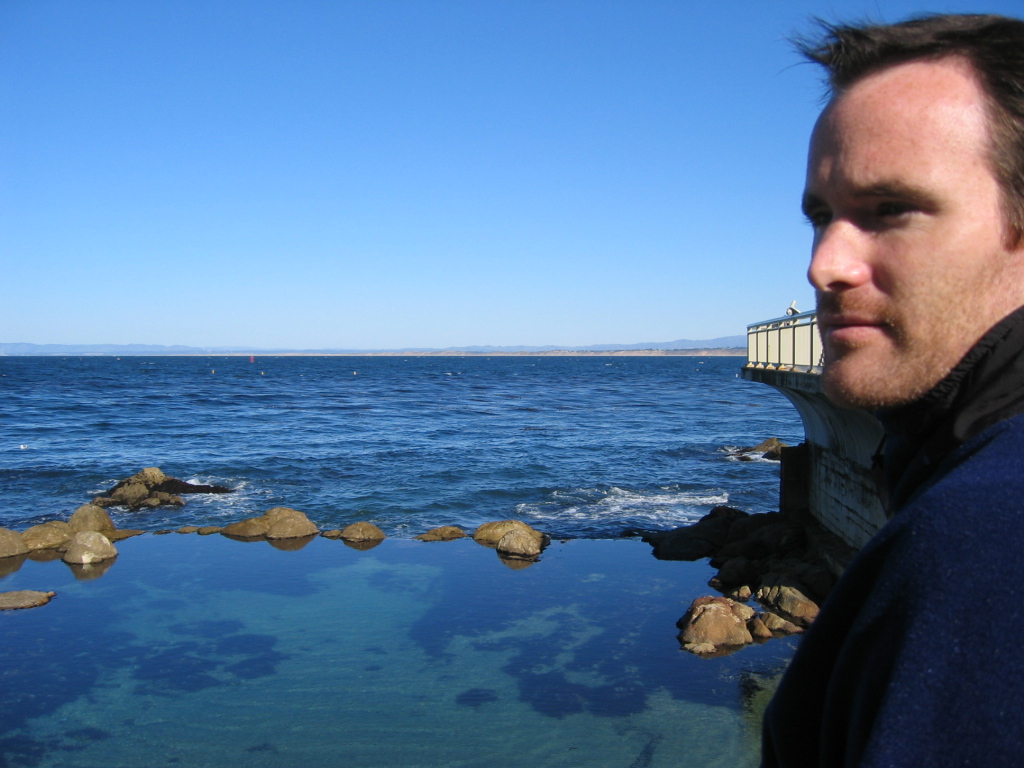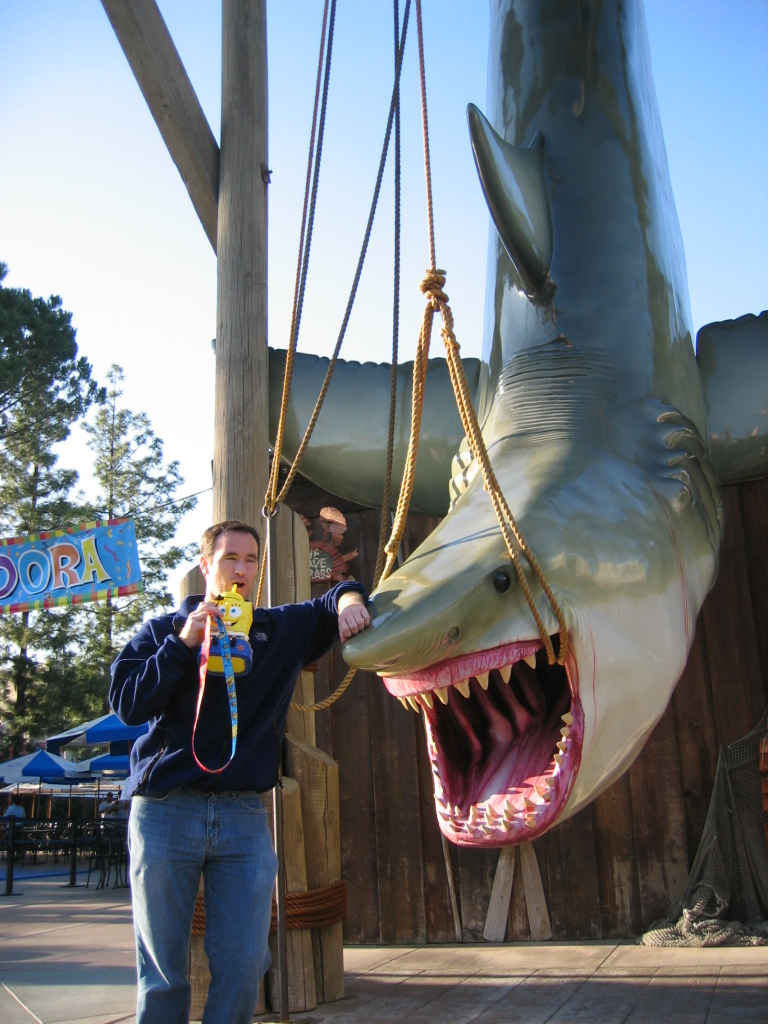Geoff
Cook |
||
 |
(Graduate Student) | |
| Email: | gcook @ ucsd.edu | |
| Phone: | (858) 534-3579 | |
| Fax: | (858) 822-0562 | |
| Address: | 9500 Gilman Drive La Jolla, California 92093-0218 |
|
| Bio: Geoff is a fifth year doctoral student in Biological Oceanography. He completed his Bachelor’s degree at the University of British Columbia in 1997. Since that time he has had the opportunity to work extensively in Central and South America conducting research on numerous species of marine turtles as well as spending time in Florida and Jamaica studying the American alligator and American crocodile. For his Master’s degree he conducted a cost-benefit analysis on the implementation of a marine reserve in the Florida Keys National Marine Sanctuary while working as the Lab Coordinator for the Department of Environmental Studies at Florida International University in Miami, FL. Through his work at SIO he would like to develop methods that will protect marine biodiversity while simultaneously moving global fisheries, particularly in developing nations, toward sustainability. | ||
| Proposed Research: Human activities are degrading the physical, chemical, and biological properties of the marine environment; causing the collapse of many fisheries worldwide (1). As a result, fishery managers and policy makers are being tasked with developing policies and management techniques that increase the sustainability of the global fishing industry. Marine reserves (MR) are an emerging tool for protecting biodiversity, sustaining productivity, and allowing for continued extractive uses of the marine environment (1,2). Over the past decade, MRs have gained rhetorical acceptance in fishery management plans as a means of mitigating uncertainty and bet-hedging against management failure while promoting marine habitat protection (3,4). Yet despite their anticipated importance, MRs effectively protect less than 0.01% of the world’s oceans (3). The design of MRs rests on two critical principles: 1) spillover (export of biomass via juvenile/adult emigration) from within a reserve into adjacent waters; and 2) population connectivity on a regional scale via pelagic egg/larval dispersal. Although there is evidence that MRs provide spillover effects (see 1,4,5); the degree to which population connectivity occurs is debatable (4), and due to a lack of connectivity-model validation and conflicting results from field trials using various stocks, much uncertainty remains (4,6,7). Many regard larval dispersal in marine ecosystems to be one of the “major unsolved problems of biological oceanography” (8). However, accurate and robust estimates of well- defined larval dispersal and well-defined local retention are essential prerequisites to resolving marine colonization patterns and to design effective marine reserves (9). I propose to quantify the extent of larval dispersal and subsequent benthic recruitment in the Strait of Georgia and then develop a spatially-explicit population model that has sufficient predictive capability to increase the effectiveness of marine reserve designs, from a connectivity perspective. To track larval dispersal, two complementary fish otolith tagging techniques will be used; one natural and one artificial. The first relies on the fact geochemical signatures of population origin reside in the calcified structures of fish larvae (i.e. otoliths) and act as a natural tag (9). Mass spectrometry (i.e. ICP-MS) will be used to identify trace element signatures within the otolith created by spatial differences in water chemistry (typical of coastal systems in which this study will occur; 9,10,11). These natural tag data, from a larger spatial and temporal scale, will be validated through an independent mark-recapture study on a subset of individuals from known source locations. In this second study, an artificial fluorescent compound (i.e. oxytetracycline) will be used to tag the eggs of the model fish species (cabezon, Scorpaenichthys marmoratus and garibaldi, Hypsypops rubicundus). This compound creates an unambiguous fluorescence signature during UV microscopy, is readily incorporated into the calcified tissues of larvae, and has been successfully used to mass-mark batches of fish eggs in the field (9,12). Furthermore, research shows these tags are detectable for up to 3 years, exposure does not impact larval growth or mortality, and a 100% marking efficiency is possible over a range of immersion times and chemical concentrations; making this technique ideally suited for the study in question.(9). This project will yield the first unequivocal data set that realistically describes larval dispersal on a regional scale. The findings will be used to create an explicit population connectivity model that will be invaluable to scientists, resource managers, and policy makers involved in the planning process of marine reserve networks; and will act to construct the blueprint for future marine reserves, increasing the sustainability of marine fisheries while simultaneously protecting marine biodiversity. |
||
| Literature Cited: 1. Lubchenco, J., et al. 2003. Plugging a hole in the ocean: the emerging science of marine reserves. Ecological Applications 13: Supp. S3-S7. 2. Russ, G.R., and D.C. Zeller. 2003. From mare liberum to mare reservarum. Marine Policy 27: 75-78. 3. Pauly, D., et al. 2002. Towards sustainability in world fisheries. Nature 418: 689- 695. 4. Russ, G. R. 2002. Yet another review of marine reserves as reef fishery management tools. in P.F. Sale, ed. Coral Reef Fishes: Dynamics and Diversity in a Complex Ecosystem. Academic Press, San Diego, CA. 5. Palumbi, S. 2002. Marine Reserves: A tool for ecosystem management and conservation. Report to the Pew Oceans Commission, Washington, DC. 6. Botsford, L.W., et al. 2003. Principles for the design of marine reserves. Ecological Applications 13: Supp. S25-S31. 7. Gerber, L.R., et al. 2003. Population models for marine reserve design: a retrospective and prospective synthesis. Ecological Applications 13: Supp. S47-S64. 8. Palumbi, S.R. 1999. The prodigal fish. Nature 402: 733-735. 9. Thorrold, S.R., et al. 2002. Quantifying larval retention and connectivity in marine populations with artificial and natural markers. Bulletin of Marine Science 70: Supp. 291-308. 10. Gillanders, B.M., and M.J. Kingsford. 1996. Elements in otoliths may elucidate the contribution of estuarine recruitment to sustaining coast reef populations of a temperate fish. Marine Ecology Progress Series 141: 13-20. 11. Thorrold, S.R., et al. 1998. Accurate classification of nursery areas of juvenile weakfish (Cynoscion regalis) based on chemical signatures in otoliths. Marine Ecology Progress Series 173: 253-265. 12. Jones, G.P., et al. 1999. Self-recruitment in a coral reef fish population. Nature 402: 804-804. |
||
Photos:  |
||